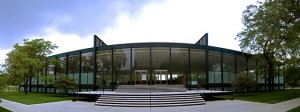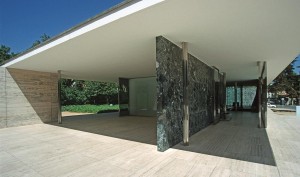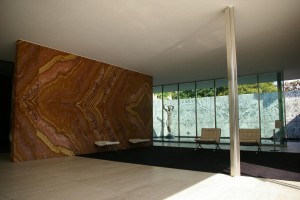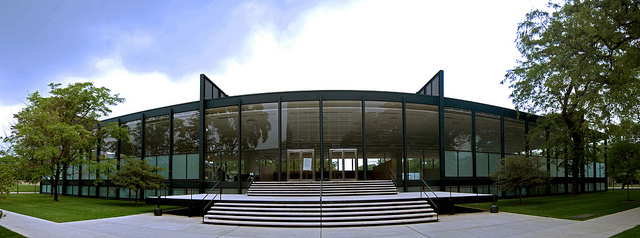Born in Aachen in, Mies (1886 – 1969) trained under architect Peter Behrens. He eventually went on to work as the director of the Bauhaus for a short amount of time until the Gestapo takeover. 1 By 1937, Mies had emigrated to the United States and taken up residency as the Director of Architecture at the Armour Institute, which would soon become Illinois Institute of Technology (IIT). 2 As a total revamp of the educational system there, Mies focused on a ground-up approach, and had students learn the basics and then, upon demonstrating appropriate ability, take up the fundamentals of architecture. 3 4
Much like Le Corbusier, Mies believed that the requirement of architecture was to satisfy the societal requisites of the time, which led him to believe that rationalization of residential complexes would help to satisfy all normal requirements through what he dubbed “skin-and-bones architecture.” 5 In particular, he and Le Corbusier both had a similar style of constructing complexes whose interiors could be forced into any needed formation to suit the needs of the family. Having both been heavily influenced by Peter Behrens, it is no surprise that their style evolved so closely, both resembling the ideal of “less is more.” This notion, typically misattributed to Mies, was a teaching of Behrens onto his pupils. 6
In a critical departure from the style of many modern architects, but still in line with his belief that “less is more,” Mies van der Rohe left behind his use of concrete as a material of choice. Looking to build a skyscraper in Chicago just after World War II, Mies was unable to use steel, the material with which he envisioned the building, and instead had to use concrete. In his own words, he “never thought about concrete anymore.” 7 As is evident in his creations, Mies’ work often centered around the use of glass and steel framing, typically only employing concrete for floors and ceilings. In Crown Hall at IIT, Mies’ materials of choice were precisely steel and glass, which very minimal use of other materials (see figure 1 below). Of course, several of his buildings made use of a variety of materials, such as the Barcelona Pavilion (see figures 2 & 3 below). In this work, Mies employed marble, travertine, and red onyx. However, despite the large walling units in the building, it provides a embodies a sense of openness because of the wall-length window units in place. This resonates hugely with the “less is more” ideal prevalent in Mies’ architecture as well as the focus on volume in modernism.

Location: Chicago, IL
Architect: Ludwig Mies van der Rohe
Photo by: Jan Uy

Location: Barcelona, Spain
Architect: Ludwig Mies van der Rohe
Photo by: Hans Peter Schaefer

Location: Barcelona, Spain
Architect: Ludwig Mies van der Rohe
Photo by: MartinD
-SR
Figure 1: Jan Uy, S.R. Crown Hall, June 15, 2010. Available from: Flickr, link (accessed November 20, 2015).
Figure 1: MartinD, Van der Rohe Pavillion overview. Licensed under CC BY-SA 3.0 via Wikimedia Commons. Available from: Wikimedia, link (accessed November 20, 2015).
Figure 3: Hans Peter Schaefer, Barcelona mies v d rohe pavillon weltausstellung1999 03. Licensed under CC BY-SA 3.0 via Wikimedia Commons. Available from: Wikimedia, link (accessed November 20, 2015).
Notes:
- “Legacy” accessed Nov. 2, 2015 http://www.miessociety.org/legacy/ ↩
- Ibid ↩
- Ibid ↩
- Moisés Puente, “Conversations with Mies van der Rohe” (New York, Princeton Architectural Press, 2008), 46 ↩
- Kenneth Frampton, “Modern Architecture: A Critical History” (London, Thames & Hudson, Ltd., 2007), 161 – 166 ↩
- “What did Mies van der Rohe mean by less is more?” accessed Nov. 3, 2015, http://www.phaidon.com/agenda/architecture/articles/2014/april/02/what-did-mies-van-der-rohe-mean-by-less-is-more/ ↩
- Puente, “Conversations”, 17 ↩
